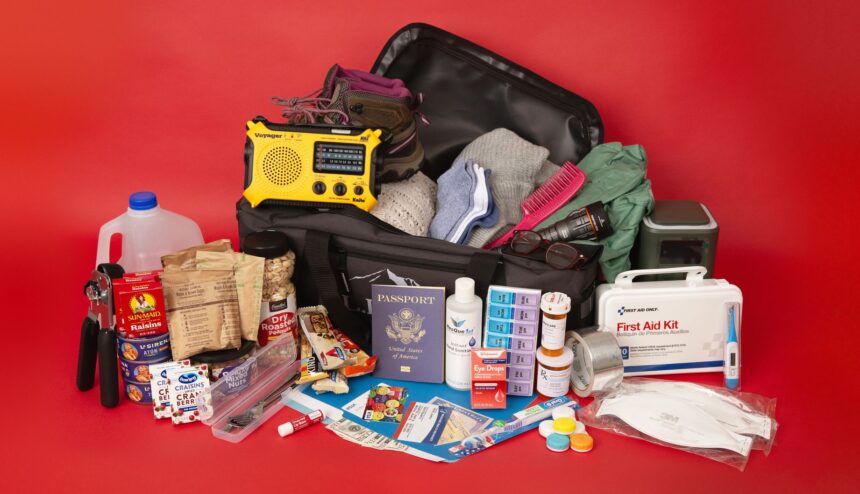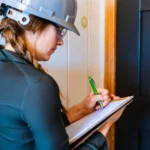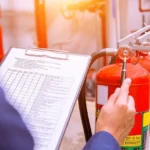In an emergency, having a well-prepared evacuation kit can mean the difference between safety and chaos. Did you know that nearly 60% of Americans aren’t ready for a disaster? This article on Emergency Evacuation Kits: Essentials for Safety is designed for families, individuals, and pet owners who face the challenge of ensuring their loved ones are protected during unexpected situations. We’ll explore the critical components needed for your kit, including food, water, and medical supplies, while addressing common concerns about accessibility and customization. Moreover, we’ll guide you on how to keep your kit updated and ready for action. By the end of this article, you’ll be equipped with practical insights and expert advice to enhance your preparedness, ensuring you and your loved ones are ready to face whatever comes your way.
Importance of Being Prepared
How can you ensure your emergency preparedness is effective?
Being well-prepared for emergencies is crucial for your safety during unpredictable disasters such as wildfires and floods. To create an effective emergency kit, include essentials like non-perishable foods, a reliable water supply, and necessary medications.
Ensure your kit is lightweight and easily transportable to facilitate a quick evacuation.
- Regularly check and replenish your supplies.
- Customize your kit based on specific risks in your area.
- Educate your family on evacuation routes and procedures.
Additionally, understanding the wildland-urban interface can help you identify specific risks associated with living in areas prone to wildfires.
By taking these steps, you not only protect yourself but also contribute to community resilience.
For more detailed strategies on preparing for various emergencies, see our guide on comprehensive disaster readiness.
Essential Supplies for Your Kit
What Should You Include in Your Emergency Evacuation Kit?
When assembling an emergency evacuation kit, prioritize essential supplies that will support your well-being during a crisis. Start with at least three days’ worth of non-perishable food and three gallons of water per person to ensure hydration and nutrition.
A comprehensive first aid kit and necessary medications are vital for addressing any health concerns.
- Don’t overlook personal hygiene items for cleanliness.
- Include copies of important documents like identification and insurance.
- Equip yourself with a flashlight, battery-powered radio, and extra batteries for communication during power outages. Additionally, consider including a fire extinguisher inspection in your kit to ensure you are prepared for potential fire emergencies.
By preparing these essentials, you enhance your resilience and safety in emergencies.
For more tips on emergency preparedness, see our guide on creating a family emergency plan.
Personalizing Your Evacuation Kit
How can you personalize your evacuation kit effectively?
Personalizing your evacuation kit ensures that it meets your specific needs during an emergency. Begin by including a 3-day supply of non-perishable food and a minimum of 3 gallons of water per person to ensure adequate nutrition and hydration.
Additionally, pack personal items like necessary medications, a change of clothes, and extra eyeglasses to cater to your health and comfort.
- Don’t forget important documents like birth certificates and passports.
- Include pet food and water if you have animals.
- If time allows, consider adding valuable items, family photos, and chargers for your devices.
This tailored approach enhances your safety and comfort during emergencies. Furthermore, ensure that your kit includes items that account for fire safety principles to better prepare for potential fire-related situations. For further insights, check out our guide on essential emergency supplies.
Ensuring Quick Access to Critical Items
How can you organize your evacuation kit for quick access during emergencies?
To ensure rapid access to essential items in an emergency, start by placing crucial documents like birth certificates and passports in a waterproof pouch.
Keep extra car keys, credit cards, and cash readily available for smooth transportation. It’s also vital to include a flashlight and a battery-operated radio with extra batteries to stay informed during power outages.
- Store sturdy shoes near your bed for easy access during nighttime evacuations.
- Don’t forget to pack pet essentials, including food and water, to ensure their safety.
- Regularly check and update your kit to keep items fresh and functional. Additionally, consider including items that support your emergency preparedness to enhance safety for all occupants.
With these strategies, you’ll be better prepared to respond swiftly. For further insights on emergency preparedness, see our guide on creating a family emergency plan.
Special Considerations for Pets
How should you prepare your pets for emergencies?
When preparing for emergencies, it’s vital to consider your pets’ specific needs in your evacuation plan. Start by assembling a 3-day supply of food and water tailored for your furry friends.
Ensure you have essential items like a sturdy leash, a collar with ID tags, and a comfortable carrier for safe transport. Don’t forget to include medications and vaccination records to keep your pet healthy during the crisis.
- Pack familiar items such as blankets and toys for comfort.
- Include sanitation supplies like waste bags and paper towels for hygiene.
- A portable litter box can be essential for cats on the go.
These preparations not only ensure your pet’s safety but also provide comfort during stressful times. For more tips on emergency preparedness, see our guide on creating a family evacuation plan.
Staying Informed and Updated
How can you ensure you’re prepared for emergencies?
To confirm you’re always ready for emergencies, staying informed is crucial. Regularly visit reputable sources like www.ready.gov for updates on safety protocols and disaster preparedness strategies.
Keeping your emergency kit stocked with necessary supplies ensures you can act quickly during a crisis.
Subscribing to newsletters from organizations like the Red Cross provides timely information on new resources and training opportunities.
Participating in local training sessions helps maintain your skills and keeps you updated on the latest safety practices.
By staying knowledgeable, you enhance your capability to safeguard yourself and your loved ones during emergencies. Implementing early warning systems can significantly improve your readiness for unexpected situations.
For more detailed strategies, see our guide on emergency preparedness essentials.
Resources and Support for Preparedness
In preparing for emergencies, countless resources and support systems can help you.
But have you considered how you can enhance your preparedness through community involvement?
Discover how donating to disaster relief initiatives not only supports others but also strengthens your own emergency response capabilities.
Donation Options Available
How can you contribute to disaster preparedness and response?
Supporting disaster preparedness has never been easier, with donation options tailored to fit various budgets. You can make a difference with contributions starting at just $10, which directly aids in preparedness initiatives.
Larger donations, such as $75, $250, or even $1000, help ensure vital resources like emergency supply kits reach those in urgent need.
- Donations enhance community resilience.
- Purchases from the Red Cross Store support critical initiatives.
- Every dollar strengthens preparedness and recovery efforts.
Your contributions are essential for creating and distributing emergency supply kits for families facing disasters.
Learn more about effective ways to support these initiatives by checking out our guide on disaster response strategies.
Educational Resources Offered
How can you effectively prepare for emergencies?
Empowering yourself with the right knowledge can make all the difference in emergency situations. By utilizing educational resources, you can acquire vital skills in emergency readiness and survival techniques. Websites like www.ready.gov and ReadyForWildfire.org provide extensive guidance on essential supplies and wildfire preparedness, ensuring you’re well-informed.
To enhance your preparedness, consider these steps:
- Engage with online learning materials: Interactive content can deepen your understanding.
- Invest in survival kits from the Red Cross Store: These are designed for various emergencies.
- Participate in community training events: These opportunities boost public awareness and practical skills.
Don’t delay—start your preparation journey today! For more in-depth strategies, see our guide on emergency preparedness essentials.
Expert Support Services
How can expert support services enhance emergency preparedness?
Expert support services are vital in improving emergency readiness for individuals and organizations. They provide essential training and resources, such as workshops by the Red Cross, to help you effectively assemble emergency evacuation kits.
Additionally, customer support options like live assist and screenshare ensure you receive guidance during the preparation process.
- Utilize online learning resources to understand best practices.
- Participate in local training events to engage with professionals.
- Create a community network for ongoing support and information sharing.
By leveraging these expert resources, you can significantly bolster your disaster preparedness efforts.
For further insights, see our guide on assembling effective emergency kits.
Frequently Asked Questions
What Are the 5 Essentials for an Emergency Kit?
FAQ
Q: What should I include in an emergency kit? A: Essential items for an emergency kit include food, water purification, first aid supplies, a portable charger, and a multi-tool.
Q: Why is water purification important in an emergency kit? A: Water purification is crucial in an emergency kit to ensure safe drinking water, preventing dehydration and illness.
Q: What food is best for an emergency kit? A: Non-perishable, nutrient-dense food like energy bars, canned goods, and freeze-dried meals are ideal for an emergency kit.
Q: How can I keep my emergency kit charged? A: A portable charger is essential for your emergency kit to keep devices powered during power outages or emergencies.
Q: What first aid items are necessary in an emergency kit? A: An emergency kit should include bandages, antiseptics, pain relievers, and any personal medications for effective first aid.
What Are the 10 Essential Survival Kit Items?
FAQ
What are the essential survival kit items? The essential survival kit items include a first aid kit, water purification tablets, non-perishable food, flashlight, emergency blanket, multi-tool knife, whistle, portable charger, hygiene items, and local maps.
Why do I need a first aid kit in my survival kit? A first aid kit is vital for treating injuries and illnesses promptly, ensuring your safety and health in emergencies.
How do water purification tablets work? Water purification tablets eliminate harmful pathogens from contaminated water, making it safe to drink during survival situations.
What type of food should I include in my survival kit? Non-perishable food items like energy bars, dehydrated meals, or canned goods are ideal for survival kits, as they have long shelf lives.
Why is a flashlight important in a survival kit? A flashlight provides visibility in dark conditions, helping you navigate safely and signaling for help in emergencies.
How do I choose a multi-tool knife for my survival kit? Select a multi-tool knife that includes essential features like a blade, screwdriver, can opener, and scissors for versatility and practicality.
What Should You Have in an Emergency Evacuation Kit?
FAQ
What should I include in an emergency evacuation kit? An emergency evacuation kit should have food, water, a first aid kit, flashlight, batteries, hygiene products, and important documents.
How much water is needed in an emergency evacuation kit? Include at least one gallon of water per person per day in your emergency evacuation kit for at least three days.
What food items are best for an emergency evacuation kit? Pack non-perishable items like energy bars, canned goods, and dehydrated meals in your emergency evacuation kit for easy transport and storage.
Why do I need a first aid kit in my emergency evacuation kit? A first aid kit is essential in your emergency evacuation kit to treat minor injuries and prevent infections during emergencies.
Is a flashlight necessary in an emergency evacuation kit? Yes, a flashlight is crucial in your emergency evacuation kit to provide light during power outages or dark conditions.
What Are the 7 Supplies That Are Needed for an Emergency Supply Kit?
FAQ
Q: What should I include in an emergency supply kit? A: An emergency supply kit should contain first aid supplies, food, water purification tools, communication devices, emergency blankets, portable chargers, and safety equipment.
Q: Why is a first aid kit essential for emergencies? A: A first aid kit is vital for treating injuries and illnesses during a crisis, ensuring you can respond quickly to medical needs.
Q: How can I purify water in my emergency kit? A: Include water purification tablets or filters in your emergency supply kit to ensure you have safe drinking water during an emergency.
Q: What types of food are best for emergency kits? A: Non-perishable items like canned goods, energy bars, and dehydrated meals are ideal for your emergency supply kit, providing essential nutrition.
Q: How do communication devices help in emergencies? A: Communication devices like radios or charged mobile phones in your emergency supply kit keep you informed and connected during a crisis.
Conclusion
Preparing an emergency evacuation kit is a crucial step in ensuring your safety during unforeseen events. By implementing the strategies outlined in this article, you equip yourself with the necessary tools to respond effectively to emergencies, transforming potential chaos into manageable situations. Customizing your kit not only addresses your needs but also includes your pets, showcasing thoughtful preparedness. This proactive approach fosters resilience, allowing you to face challenges with confidence. To stay ahead, consider exploring more tips on emergency readiness or delve into our related guide for further insights. Taking the first step today can significantly enhance your security tomorrow.


